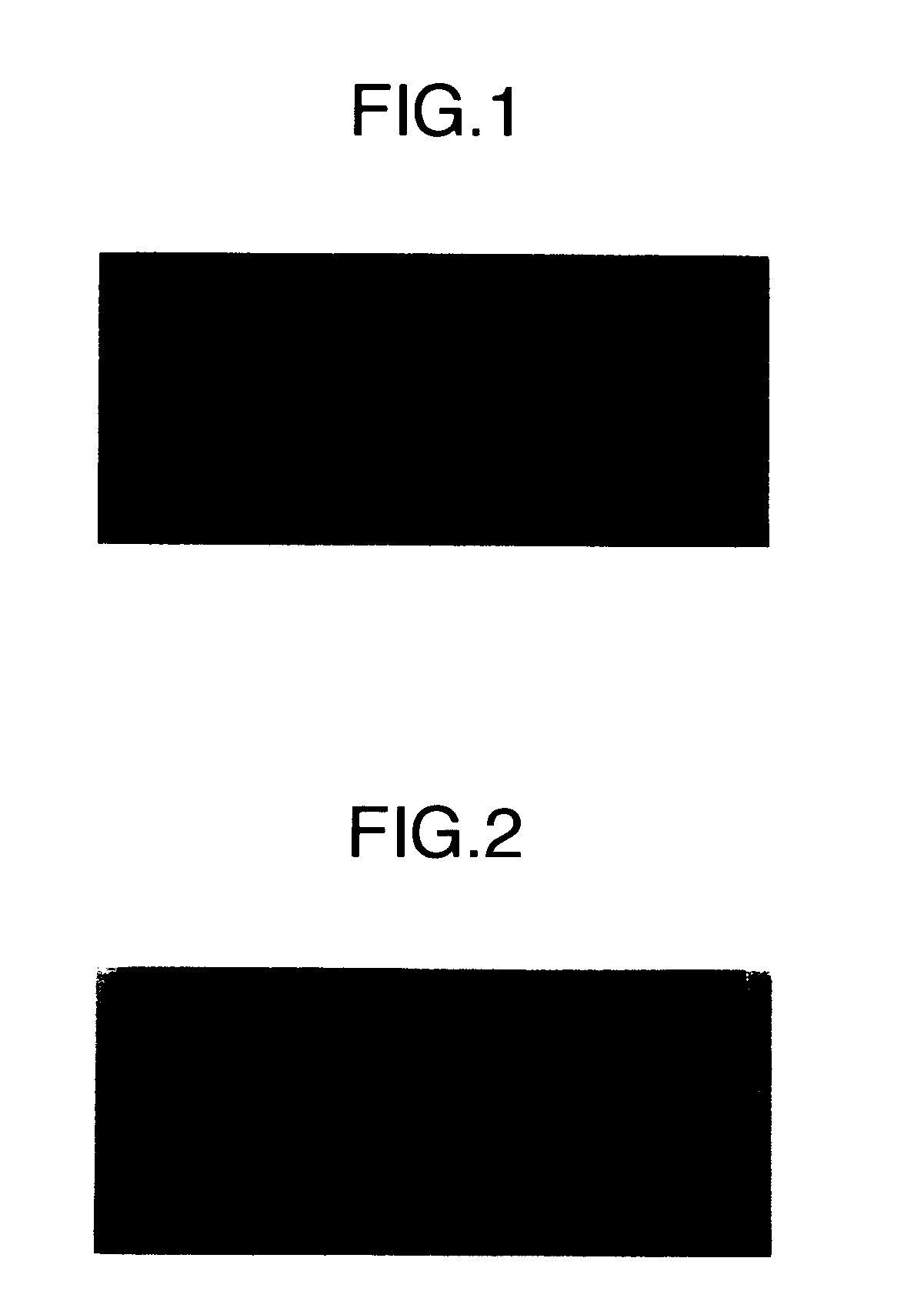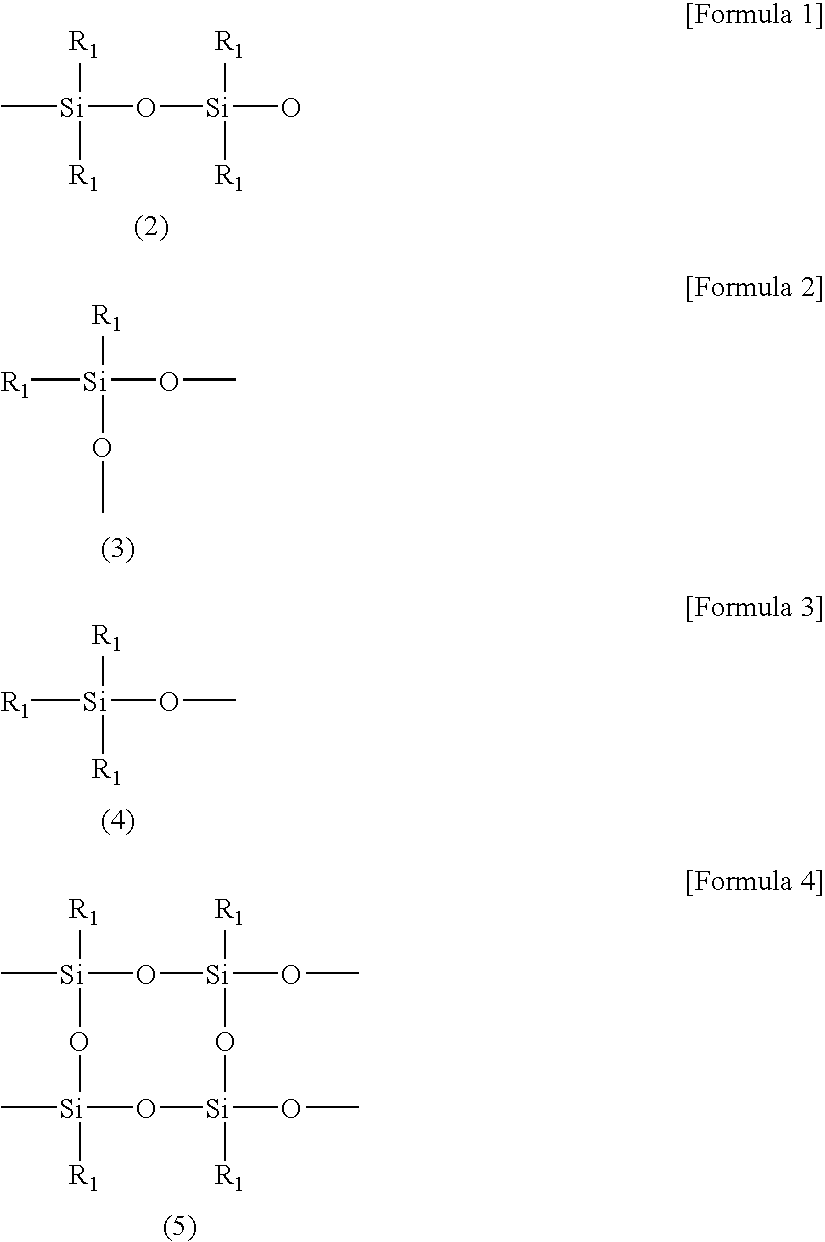Photosensitive resin composition for printing substrate capable of laser sculpture
- Summary
- Abstract
- Description
- Claims
- Application Information
AI Technical Summary
Benefits of technology
Problems solved by technology
Method used
Image
Examples
production example 1
[0147] To a 1 L separable flask having a thermometer, a stirrer and a circulator were added 447.24 g of polycarbonate diol (trade mark “PCDL L4672” (number average molecular weight: 1990; and OH value: 56.4) manufactured by Asahi Kasei Corporation) and 30.83 g of tolylene diisocyanate, the mixture was allowed to react for about 3 hours under heating at 80° C., 14.83 g of 2-methacryloyl oxyisocyanate was then added, and the mixture was further allowed to react for about 3 hours to produce a resin (a1) having a methacryl group (having about two intramolecular polymerizable unsaturated groups per molecule on the average) at the end and having a number average molecular weight of about 10000. This resin was in the form of thick malt syrup at 20° C., was fluidized when applying an external force, and did not recover its original shape even when removing the external force.
production example 2
[0148] To a 1 L separable flask having a thermometer, a stirrer and a circulator were added 447.24 g of polycarbonate diol (trade mark “PCDL L4672” (number average molecular weight: 1990; and OH value: 56.4) manufactured by Asahi Kasei Corporation) and 30.83 g of tolylene diisocyanate, the mixture was allowed to react for about 3 hours under heating at 80° C., 7.42 g of 2-methacryloyl oxyisocyanate was then added, and the mixture was further allowed to react for about 3 hours to produce a resin (a2) having a methacryl group (having about one intramolecular polymerizable unsaturated group per molecule on the average) at the end and having a number average molecular weight of about 10000. This resin was in the form of thick malt syrup at 20° C., was fluidized when applying an external force, and did not recover its original shape even when removing the external force.
production example 3
[0149] To a 1 L separable flask having a thermometer, a stirrer and a circulator were added 500 g of polytetramethylene glycol (number average molecular weight: 1830; and OH value: 61.3) manufactured by Asahi Kasei Corporation) and 52.40 g of tolylene diisocyanate, the mixture was allowed to react for about 3 hours under heating at 60° C., 6.2 g of 2-hydroxypropyl methacrylate and 7.9 g of polypropylene glycol monomethacrylate (Mn 400) were the added, the mixture was further allowed to react for 2 hours, 20 g of ethanol was then added, and the mixture was further allowed to react for 2 hours. A resin (a3) having a methacryl group (having about 0.5 intramolecular polymerizable unsaturated groups per molecule on the average) at the end and having a number average molecular weight of about 20000 was produced. This resin was in the form of thick malt syrup at 20° C., was fluidized when applying an external force, and did not recover its original shape even when removing the external for...
PUM
 Login to View More
Login to View More Abstract
Description
Claims
Application Information
 Login to View More
Login to View More - Generate Ideas
- Intellectual Property
- Life Sciences
- Materials
- Tech Scout
- Unparalleled Data Quality
- Higher Quality Content
- 60% Fewer Hallucinations
Browse by: Latest US Patents, China's latest patents, Technical Efficacy Thesaurus, Application Domain, Technology Topic, Popular Technical Reports.
© 2025 PatSnap. All rights reserved.Legal|Privacy policy|Modern Slavery Act Transparency Statement|Sitemap|About US| Contact US: help@patsnap.com



